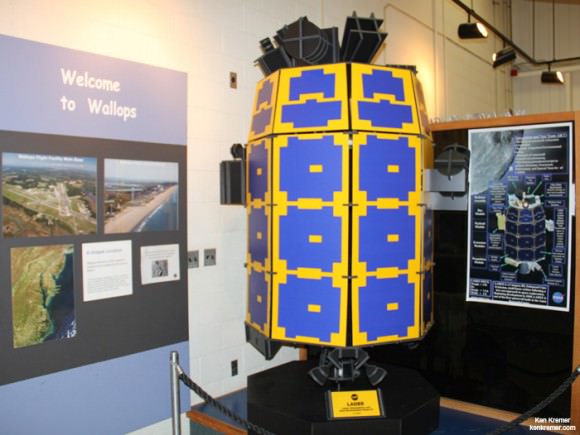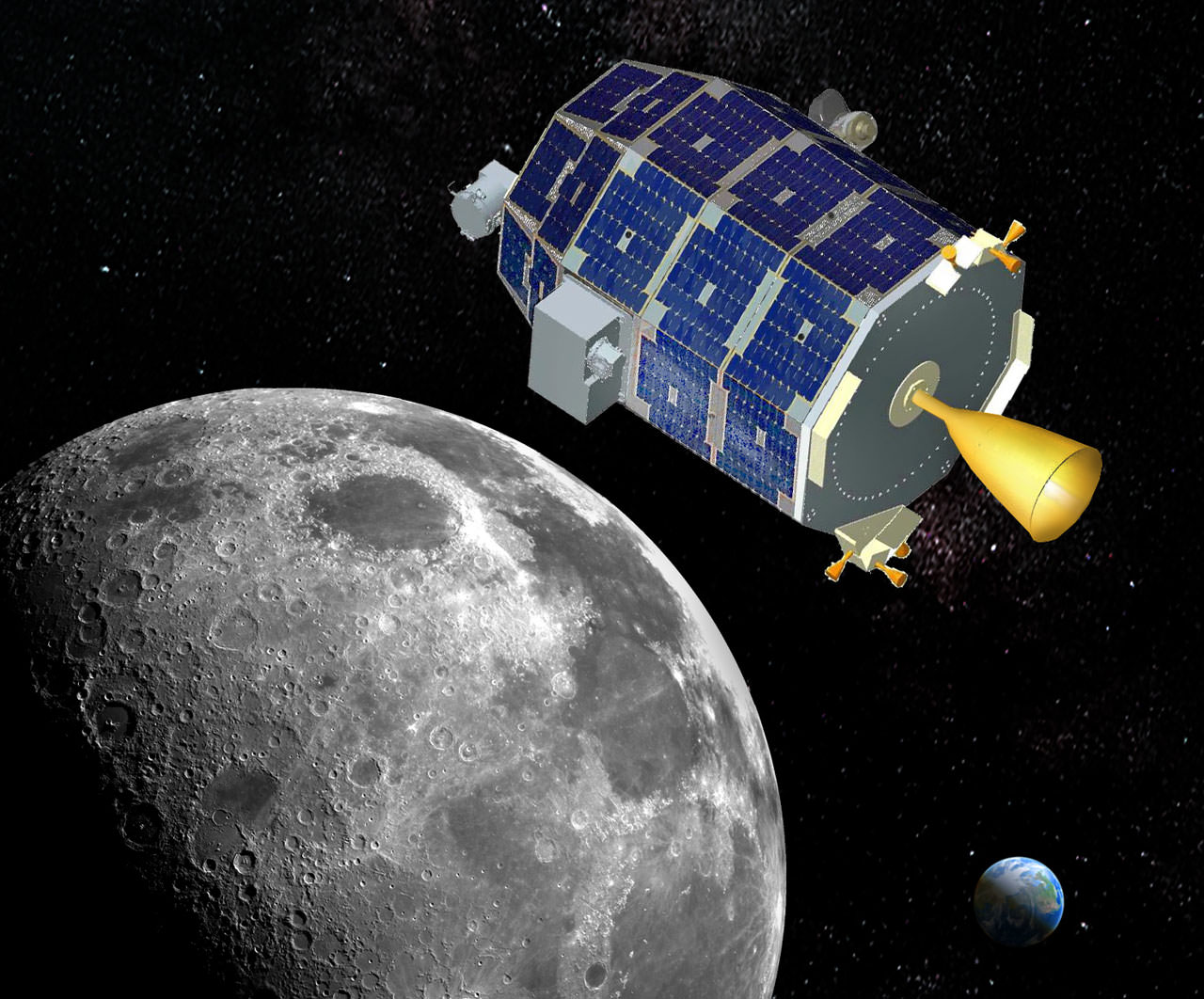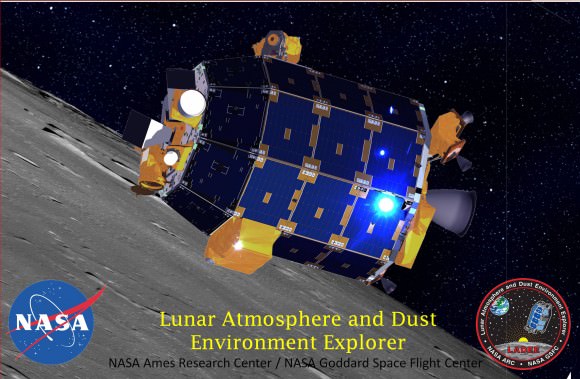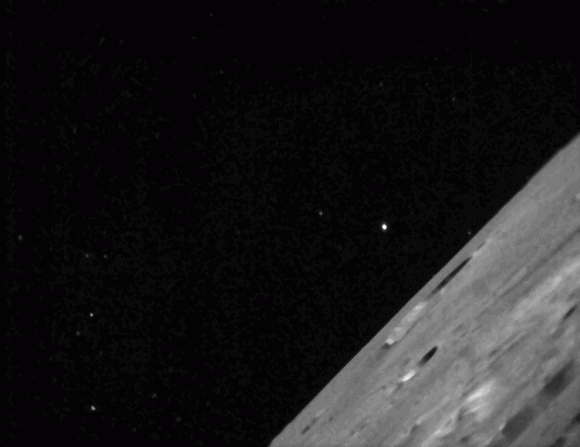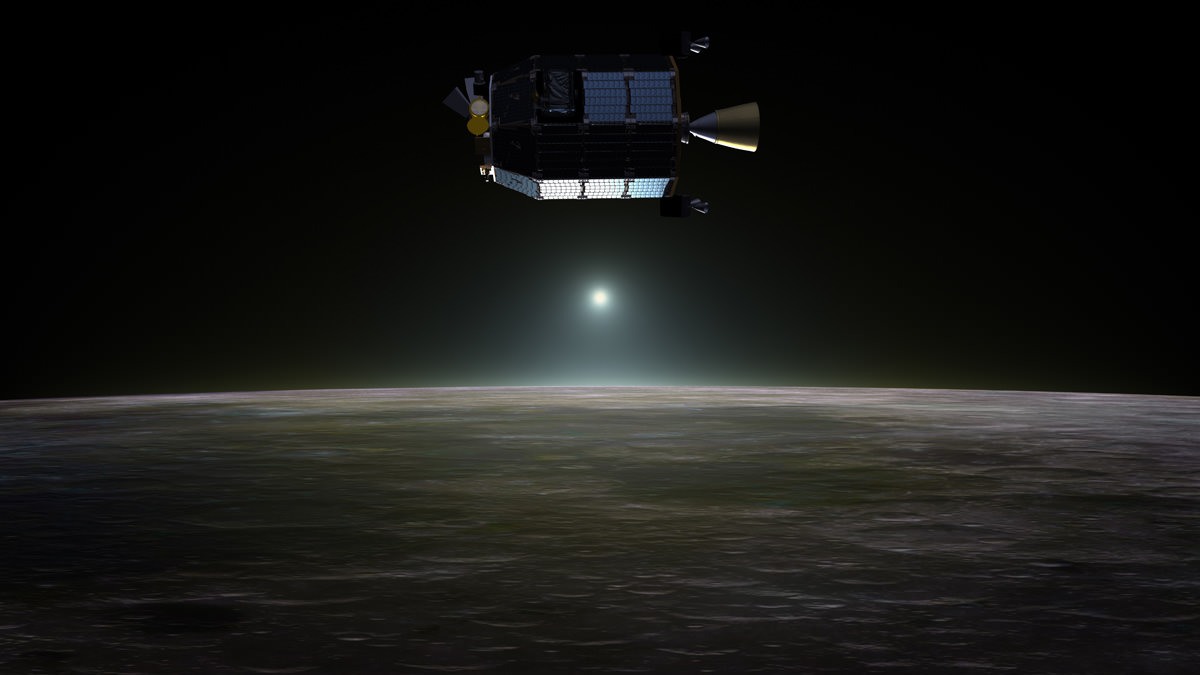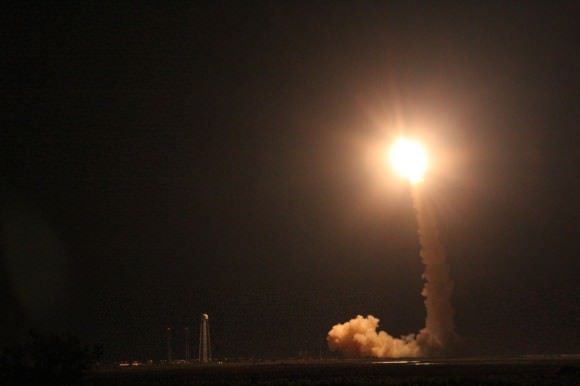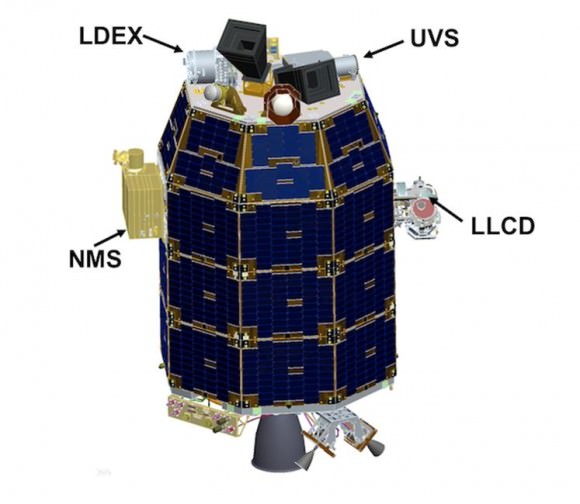NASA’s LADEE lunar orbiting dust and atmosphere explorer probe has bitten the dust and crashed into the Moon’s surface exactly as planned following a fabulously successful and groundbreaking science mission that exceeded all expectations.
The Lunar Atmosphere and Dust Environment Explorer (LADEE) spacecraft impacted the far side of the Moon sometime overnight between 12:30-1:22 a.m. EDT, Friday, April 18 (9:30 and 10:22 p.m. PDT, Thursday, April 17) according to a NASA statement.
Running low on fuel and unable to continue any further science observations, the couch sized spacecraft was intentionally plunged into the rugged lunar surface at a spot designed to keep it far away from disturbing any of the historic Apollo manned lunar landing sites or unmanned surveyors on the Moon’s near side.
Mission controllers at NASA’s Ames Research Center allowed LADEE’s orbit to naturally decay following the conclusion of the probes extended mission in the final low orbit science phase.
The probe was likely smashed violently to smithereens and mostly vaporized from the heat generated upwards of several hundred degrees. Any surviving debris may be buried in shallow crater formed by the impact.
“At the time of impact, LADEE was traveling at a speed of 3,600 miles per hour – about three times the speed of a high-powered rifle bullet,” said Rick Elphic, LADEE project scientist at Ames, in a NASA statement.
“There’s nothing gentle about impact at these speeds – it’s just a question of whether LADEE made a localized craterlet on a hillside or scattered debris across a flat area. It will be interesting to see what kind of feature LADEE has created.”
The powerful NAC telescopic camera aboard NASA’s still orbiting Lunar Reconnaissance Orbiter (LRO) will be directed in coming months to try and photograph the impact site after engineers pinpoint the likely crash site.
LRO has already imaged LADEE while both were co-orbiting in different lunar orbits.
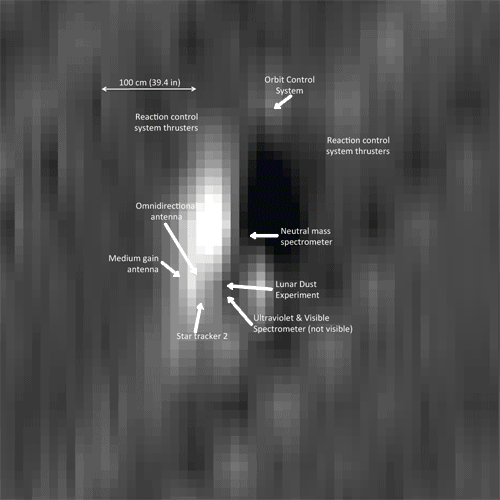
After completing its primary science mission in March, the already ultra low altitude of the lunar orbiting probe was reduced even further so that it was barely skimming just 2 kilometers (1 mile) above the pockmarked lunar surface.
Such a low altitude thus enabled LADEE to gather unprecedented science measurements of the Moon’s extremely tenuous atmosphere and dust particles since the species would be present at a higher concentration.
Lots of fuel is required to maintain LADEE’s orbit due to the uneven nature of the Moon’s global gravity field.
The final engine firing was commanded on April 11 to ensure a far side impact and the safety of all the historic lunar landing sites.
“LADEE also survived the total lunar eclipse on April 14 to 15. This demonstrated the spacecraft’s ability to endure low temperatures and a drain on batteries as it, and the moon, passed through Earth’s deep shadow,” said NASA
LADEE was launched on Sept. 6, 2013 from NASA Wallops in Virginia on a science mission to investigate the composition and properties of the Moon’s pristine and extremely tenuous atmosphere, or exosphere, and untangle the mysteries of its lofted lunar dust dating back to the Apollo Moon landing era.
All those objectives and more were accomplished during its nearly half year investigating Earth’s nearest neighbor.
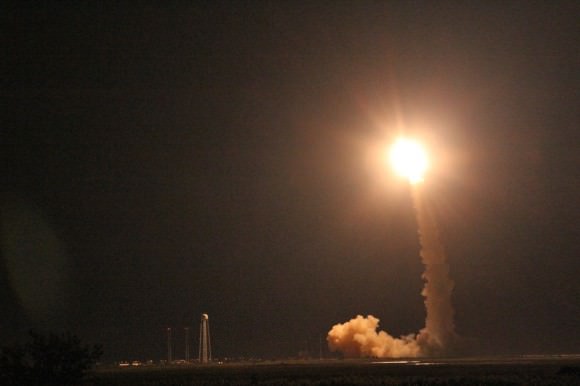
It entered lunar orbit on Oct. 6, 2013 amidst the ridiculous government shutdown that negatively affected a number of science missions funded across the US federal government.
The science mission duration had initially been planned to last approximately 100 days and finish with a final impact on the Moon on about March 24th.
NASA granted LADEE a month long extension since the residual rocket fuel was more than anticipated due to the expertise of LADEE’s navigation engineers and the precision of the launch atop the Orbital Sciences Minotaur V rocket and orbital insertion.
“It’s bittersweet knowing we have received the final transmission from the LADEE spacecraft after spending years building it in-house at Ames, and then being in constant contact as it circled the moon for the last several months,” said Butler Hine, LADEE project manager at Ames.
The 844 pound (383 kg) robot explorer was assembled at NASA’s Ames Research Center, Moffett Field, Calif., and is a cooperative project with NASA Goddard Spaceflight Center in Maryland.
The $280 million probe is built on a revolutionary ‘modular common spacecraft bus’, or body, that could dramatically cut the cost of exploring space and also be utilized on space probes to explore a wide variety of inviting targets in the solar system.
Stay tuned here for Ken’s continuing LADEE, Chang’e-3, Orion, Orbital Sciences, SpaceX, commercial space, Mars rover and more planetary and human spaceflight news.
